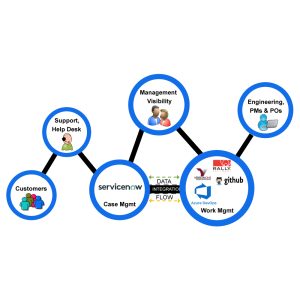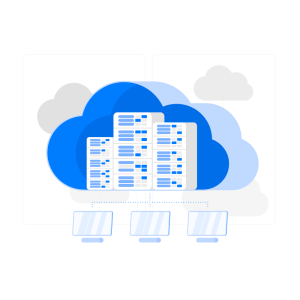In the data-driven world of modern finance, accuracy, agility, and foresight are key to business resilience and profitability. As organizations strive to navigate economic volatility and market disruptions, financial forecasting has emerged as a strategic cornerstone for decision-making. One of the most powerful tools available to finance professionals today is IBM Planning Analytics TM1. Powered by the IBM Cloud and seamlessly integrated with IBM Cloud Pak for Data, this business analytics software is transforming how enterprises approach financial planning, budgeting, and forecasting.
In this blog, we will explore what IBM Planning Analytics TM1 is, how it fits into the larger landscape of financial planning software, and why it’s considered one of the leading business forecasting tools in the market.
1. What is IBM Planning Analytics TM1?
IBM Planning Analytics TM1 is an enterprise-grade, multidimensional planning and analysis platform. Built on the TM1 in-memory engine, it enables users to create detailed models for planning, budgeting, and forecasting across all business domains—finance, sales, supply chain, and HR.
At its core, TM1 is a powerful OLAP (Online Analytical Processing) engine, known for its ability to model large, complex data sets in real time. What differentiates TM1 is its flexibility, speed, and ability to facilitate collaborative planning across business units.
IBM Planning Analytics TM1 supports both centralized and decentralized planning approaches and allows real-time collaboration between finance and operations teams.
2. The Evolution of Financial Forecasting
Traditional forecasting methods relied heavily on spreadsheets, manual inputs, and static models. As businesses grew more complex and data-rich, these methods began to fall short:
- Lack of real-time updates
- Data silos across departments
- High error rates from manual entry
- Limited scenario modeling capabilities
Modern financial forecasting demands:
- Speed and agility
- Real-time data integration
- Predictive capabilities
- Cross-functional collaboration
This is where IBM Planning Analytics TM1 shines. It elevates forecasting from a back-office task to a dynamic, strategic function.
3. Key Features of IBM Planning Analytics TM1
a. In-Memory OLAP Engine
TM1’s in-memory architecture enables lightning-fast calculation and analysis, even for large and complex datasets.
b. Multidimensional Modeling
Define hierarchies, dimensions, and rules that reflect your business reality, not spreadsheet limitations.
c. Excel Integration
Use the familiar Excel interface (via IBM Planning Analytics for Excel, or PAX) to create, edit, and analyze models.
d. Workflow and Approvals
Implement controlled, auditable planning workflows that match your organizational governance structure.
e. Real-Time Data Updates
Changes made in one area (e.g., sales forecasts) can immediately flow into related financial plans, ensuring alignment.
f. Predictive Forecasting with AI
Leverage AI-driven insights through Watson integration to enhance forecasting accuracy and uncover patterns.
4. How TM1 Enhances Financial Forecasting
Speed and Agility
Thanks to its in-memory engine, TM1 can process and update forecasts in real time, enabling rapid scenario planning.
Scenario Planning and What-If Analysis
Users can create multiple forecast versions to assess the impact of various business decisions, from market changes to supply chain disruptions.
Driver-Based Forecasting
Create models where changes in operational drivers (e.g., units sold, headcount) automatically update the financial forecast.
Rolling Forecasts
TM1 enables organizations to implement rolling forecasts that extend beyond the typical 12-month window, offering a more dynamic and accurate financial outlook.
5. Integration with IBM Cloud Pak for Data
IBM Cloud Pak for Data is a unified data and AI platform that enables data collection, organization, and analysis at scale. Integrating IBM Planning Analytics TM1 with Cloud Pak creates a powerful synergy:
- Unified Data Fabric: Connects TM1 to multiple data sources with governed access
- AI-Driven Insights: Incorporates machine learning to enhance forecast accuracy
- Data Lineage and Governance: Ensures that every data point in your forecast is traceable and compliant
This integration is especially beneficial for enterprises looking to centralize their analytics capabilities under one scalable platform.
6. Benefits for CFOs and Finance Teams
Strategic Agility
Gain the ability to adjust plans and forecasts rapidly in response to market changes.
Cross-Functional Collaboration
Finance can work more closely with operations, marketing, HR, and supply chain—breaking down silos.
Risk Mitigation
Accurate forecasts help identify potential financial risks before they materialize.
Reduced Manual Work
Automated data entry and report generation free up time for high-value analysis.
Improved Accuracy and Trust
Audit trails, data lineage, and AI-driven forecasting improve the reliability of planning models.
7. Implementation Best Practices
- Engage Stakeholders Early: Align business, finance, and IT teams from the beginning.
- Start with a Pilot Model: Prove value with one department before full rollout.
- Invest in Training: Ensure users are proficient in both TM1 and PAX.
- Automate Data Integration: Use IBM DataStage or APIs to sync real-time data into TM1.
Monitor and Iterate: Forecasting models should be reviewed quarterly to reflect changing assumptions.
8. Future Trends in Business Forecasting Tools
Predictive and Prescriptive Analytics
Tools like TM1 are shifting from forecasting “what will happen” to prescribing “what you should do.”
Embedded AI & Machine Learning
Future releases will offer deeper AI integrations that refine forecasts based on evolving patterns.
Natural Language Interfaces
With advancements in NLP, users will soon be able to query financial models via voice or chat.
Blockchain-Verified Forecasting
For audit-heavy sectors like finance and pharma, blockchain may offer tamper-proof data lineage.
9. Is TM1 Right for You?
If your organization is seeking a powerful, scalable, and intelligent financial planning software solution, IBM Planning Analytics TM1 deserves serious consideration. It goes beyond static spreadsheets to offer:
- Real-time collaboration
- Predictive forecasting
- Seamless Excel integration
- Advanced modeling and scenario analysis
Combined with IBM Cloud Pak for Data, TM1 becomes an even more potent force in modern business analytics. Whether you’re a mid-sized enterprise or a global organization, investing in TM1 can drastically improve your agility, forecasting accuracy, and strategic foresight.
IBM Planning Analytics TM1 and Cloud Pak for Data Implementation Services by Nexright
As an IBM Solution Partner, Nexright offers comprehensive consulting and implementation services for IBM Planning Analytics TM1 and IBM Cloud Pak for Data. Our team works closely with organizations to assess their current planning processes, define optimal use cases, and deploy tailored solutions that meet strategic goals.
From initial discovery and roadmap development to integration, modeling, and user training, Nexright ensures a seamless and effective transition to advanced financial forecasting platforms. We also help clients enhance their strategic decision-making by optimizing decision making with AI powered analytics, enabling them to maintain agility and forecasting accuracy.




